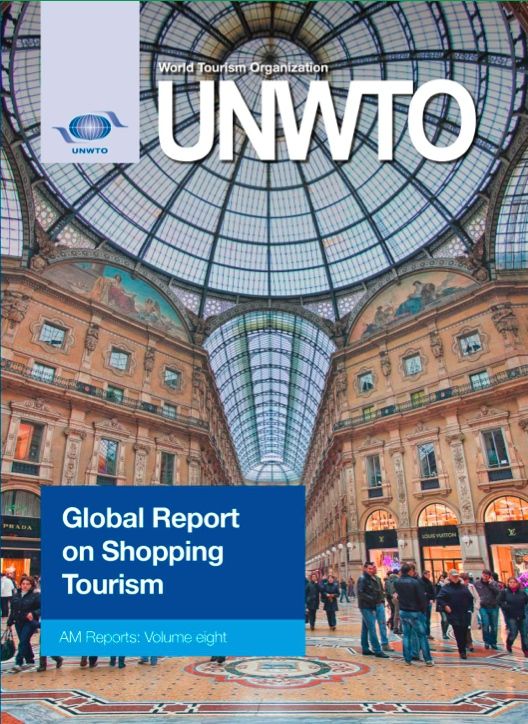
22 Jan, 2015
FREE download: UNWTO Report on Shopping Tourism
From new mall designs to new ways to harness technology, new value-added experiences to new marketing campaigns, travel & tourism destinations worldwide are working overtime to make shopping a full-fledged reason for travel, not just a side-benefit of it, according to a report by the UN World Tourism Organization (UNWTO).
Released in time for the first UNWTO Conference on Shopping Tourism to be held on 29 January at the upcoming annual Spanish travel trade event FITUR in Madrid, the report analyses trends in shopping tourism and innovative and creative experiences in Malaysia, London, Madrid, New York and a number of other global destinations. It also covers the emerging markets of China and Brazil and provides practical guidelines to help destinations promote shopping tourism.
The best practice examples and creative insights into the resilience of the shopping tourism industry clearly indicate “a paradigm shift away from the previous misconception that shopping is merely an accessory to the tourism experience, now placing it as a causal factor,” according to Ms Yolanda Perdomo, Director, UNWTO Affiliate Members.
Covered by the report are experiences and case studies of Alma Mater Studiorum University of Bologna – Rimini Campus, Value Retail, City of Venice, European Travel Commission, Lucerne University of Applied Sciences and Art, Tourism & Transport Forum Australia, InnovaTaxfree, Vienna Tourist Board and Turisme de Barcelona, the promotion boards of New York City and London, Global Blue, Deloitte, PATA, Tourism Malaysia and the Tourism Observatory of the City of Sâo Paulo.
In a Foreword to the report, Mr Taleb Rifai, the UNWTO Secretary-General, says: “Shopping has converted into a determinant factor affecting destination choice, an important component of the overall travel experience and, in some cases the prime travel motivation. Destinations have thus an immense opportunity to leverage this new market trend by developing authentic and unique shopping experiences that add value to their touristic offer while reinforcing, and even, defining their tourism brand and positioning.
“More importantly, shopping is one of the major categories of tourists’ expenditure, representing a significant source of income for national economies both directly and through the many linkages to other sectors in the economy.”
Added Mr. Miguel Mirones, Chairman of the Board of the UNWTO Affiliate Members: “The relevance of the global report lies in the need to uncover the motivations that determine travelers’ choice of destination, among which the supply of shopping products and services emerges as a key element.
“In this regard, it is of vital importance to value the public-private collaboration initiatives within the tourism sector. The Affiliate Members Programme represents an exemplary model of this, through which the reality perceived by leading tourism professionals is presented to UNWTO Member States.”
According to Ms Perdomo, “This Report comes under the umbrella of the UNWTO Affiliate Members Programme Cities Project, launched by UNWTO in 2012 in collaboration with 21 cities worldwide. The Programme set up a system of consultation on key measures that were implemented through the tourism promotion bodies of these 21 cities and created a preliminary framework for working on the common priority areas of action.
“Within this framework, shopping tourism was identified as a fundamental element for city tourism, as cities are an ideal milieu for this segment. Through the development of retail services and offerings, shopping tourism can serve as a platform for urban regeneration by adding value to areas heretofore less visited by tourists. Cities utilize shopping and retail experiences to boost the appeal of the destination, supporting economic growth and income generation. Shopping tourism and cities form a symbiotic partnership.”
She added, “Few publications have been written specifically on the contribution of shopping tourism to tourism overall and its impact on destinations. This report therefore aims to highlight this increasing contribution and its key role for consideration while designing specialized tourism products.”




Liked this article? Share it!